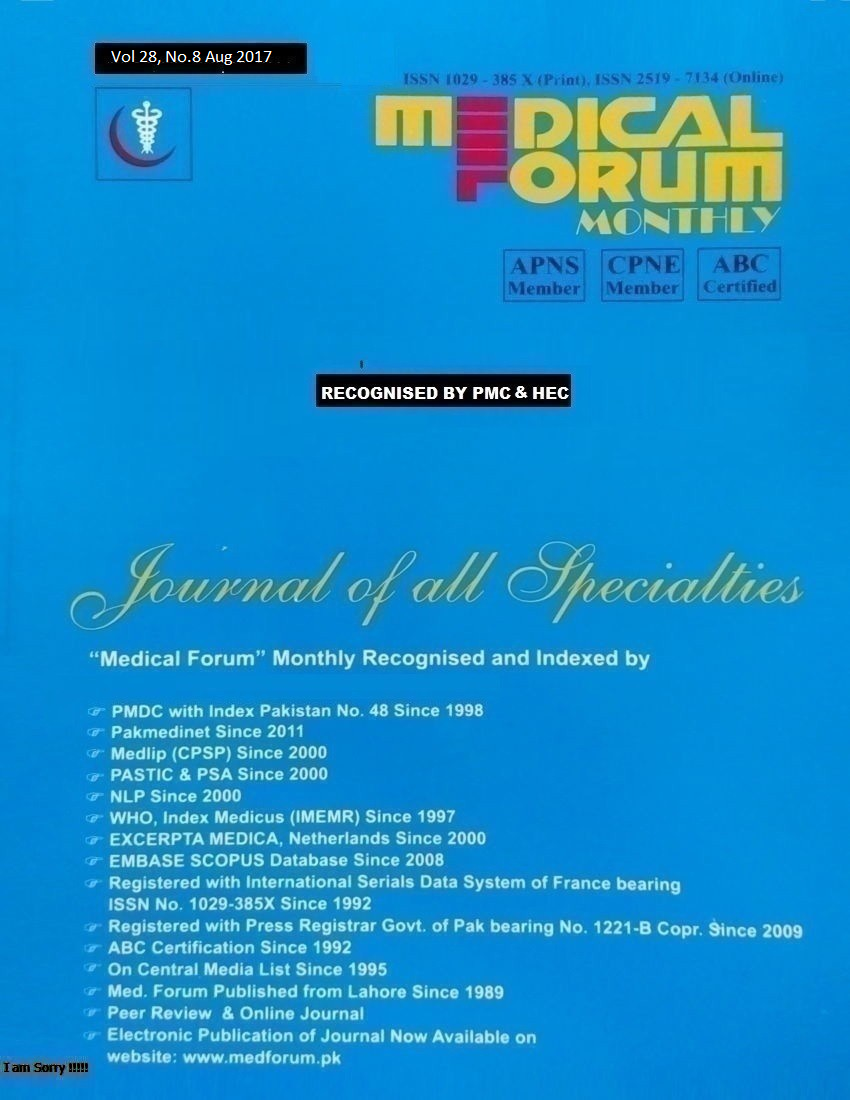
17. Comparing the Effectiveness of Lisinopril and Losartan Potassium in Treatment of Microalbuminurea in Newly Diagnosed Type II Diabetes Mellitus
Shabnam Seher, Arooj Iqbal and Tayyuba Irum
ABSTRACT
Objective: is to compare effectiveness of Lisinopril (ACE inhibitor) and Losartan Potassium (ARB) in treatment of microalbuminurea in newly diagnosed Type II DM patients in terms of reduction in microalbuminurea. Study Design: Randomized control trial study.
Place and Duration of Study: This study was conducted at the Department of General Medicine, Allied Hospital, Faisalabad from March 2016 to August 2016.
Materials and Methods: A total number of 320 (100%) patients was enrolled in the trial.SPSS (v 23) was used to analyze the patient’s data. Mean and SD were calculated and presented for numerical data and frequency percentages were calculated and presented for qualitative data. Chi square test was applied to see effect modification. P value ≤ 0.05 was considered as significant.
Results: A total number of 100% (n=320) microalbuminurea in Type II DM atients were included in this study, both genders. In our study in group (P), 85% (n=136) patients showed reducti n in microalbuminurea and in group (L), 81.9% (n=131) patients were observed reduction in microalbuminurea. To compare the efficacy of Losartan Potassium and Lisinopril, independent sample t-test was applied. It was bserved that there was no significant difference between the efficacies of Losartan Potassium and Lisinopril, i.e. these two drugs were equally effective with p-value 0.454.
Conclusion: From results of our study it is concluded that Lisinopril and Losartan potassium, both are significantly effective in reduction of microalbuminuria and can be adv sed as first line therapy in diabetes mellitus type II patients.
Key Words: Losartan Potassium, Lisinopril, Diabetes type II, M croalbuminurea
Citation of articles: Seher S, Iqbal A, Irum T. C mparing the Effectiveness of Lisinopril and Losartan Potassium in Treatment of Microalbuminu ia in Newly Diagnosed Type II DM.Med Forum 2017;28(8):63-66.
